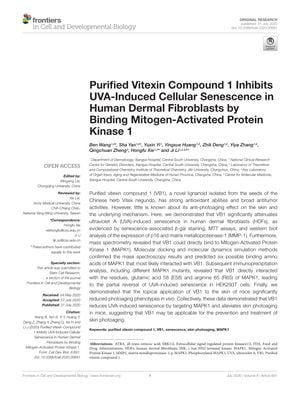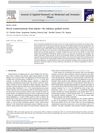Purified Vitexin Compound 1 Inhibits UVA-Induced Cellular Senescence in Human Dermal Fibroblasts by Binding Mitogen-Activated Protein Kinase 1
July 2020
in “
Frontiers in Cell and Developmental Biology
”

TLDR Vitexin Compound 1 may help reduce skin aging caused by UVA light.
The study investigated the anti-aging effects of Vitexin Compound 1 (VB1) on human dermal fibroblasts (HDFs) exposed to UVA radiation. VB1, derived from the Chinese herb Vitex negundo, was found to reduce markers of cellular senescence, such as senescence-associated beta-galactosidase, p16, and matrix metalloproteinase-1. The compound was shown to bind directly to Mitogen-Activated Protein Kinase 1 (MAPK1) at specific amino acid residues, which partially reversed the effects of UVA-induced senescence. In vivo experiments with a topical VB1 gel on UVA-irradiated mice, with 10 mice per group, demonstrated a reduction in photoaging symptoms. The study suggests VB1 as a potential treatment for skin photoaging, offering an alternative to the FDA-approved all-trans-retinoic acid, which has side effects. The number of human dermal fibroblasts used in the in vitro experiments was not specified. The research was supported by the National Natural Science Foundation of China, among other grants.




